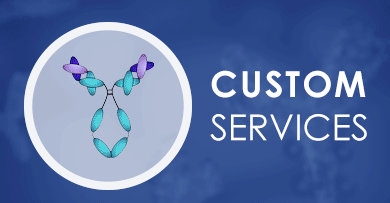+ Filter
 Loading...
Loading...

OXT
 Loading...
Loading...Anti-OXT Products
- Mouse Anti-OXT Recombinant Antibody (clone 30G5) (MOB-2746z)
-
- Derivation: Mouse
- Species Reactivity: Human
- Type: Mouse IgG2b
- Application: ELISA, WB, FC, FuncS
-
- Derivation: Phage display library screening
- Species Reactivity: Human
- Type: IgG
- Application: WB
Can't find the products you're looking for? Try to filter in the left sidebar.Filter By Tag
More Infomation
Our customer service representatives are available 24 hours a day, from Monday to Sunday. Contact Us
For Research Use Only. Not For Clinical Use.
Background
This gene encodes a precursor protein that is processed to produce oxytocin and neurophysin I. Oxytocin is a posterior pituitary hormone which is synthesized as an inactive precursor in the hypothalamus along with its carrier protein neurophysin I. Together with neurophysin, it is packaged into neurosecretory vesicles and transported axonally to the nerve endings in the neurohypophysis, where it is either stored or secreted into the bloodstream. The precursor seems to be activated while it is being transported along the axon to the posterior pituitary. This hormone contracts smooth muscle during parturition and lactation. It is also involved in cognition, tolerance, adaptation and complex sexual and maternal behaviour, as well as in the regulation of water excretion and cardiovascular functions.
Protein class
Plasma proteins
Predicted location
Secreted
Single cell type specificity
Cell type enhanced (Late spermatids, Hepatocytes, Proximal tubular cells, Early spermatids, Proximal enterocytes)
Immune cell specificity
Low immune cell specificity
Cell line specificity
Cell line enhanced (CACO-2, HMC-1)
Interaction
Interacts with oxytocin receptor (Ki=1. 5 nM) (PubMed:18174156). Interacts with vasopressin V1aR/AVPR1A (Ki=37 nM), V1bR/AVPR1B (Ki=222 nM) and V2R/AVPR2 receptors (Ki=823 nM) (PubMed:18174156).
Molecular function
Hormone
More Types Infomation

